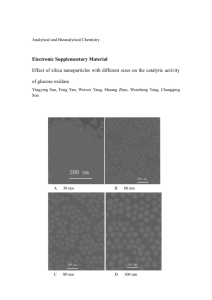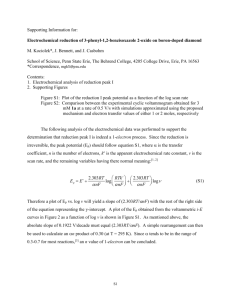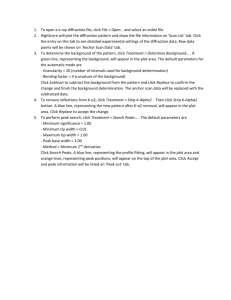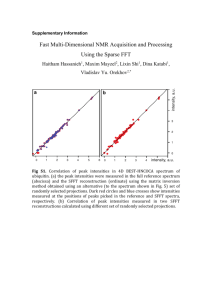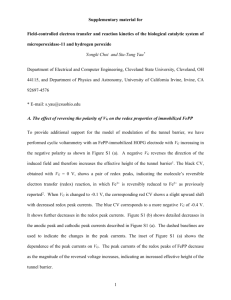Supporting information - Springer Static Content Server
advertisement
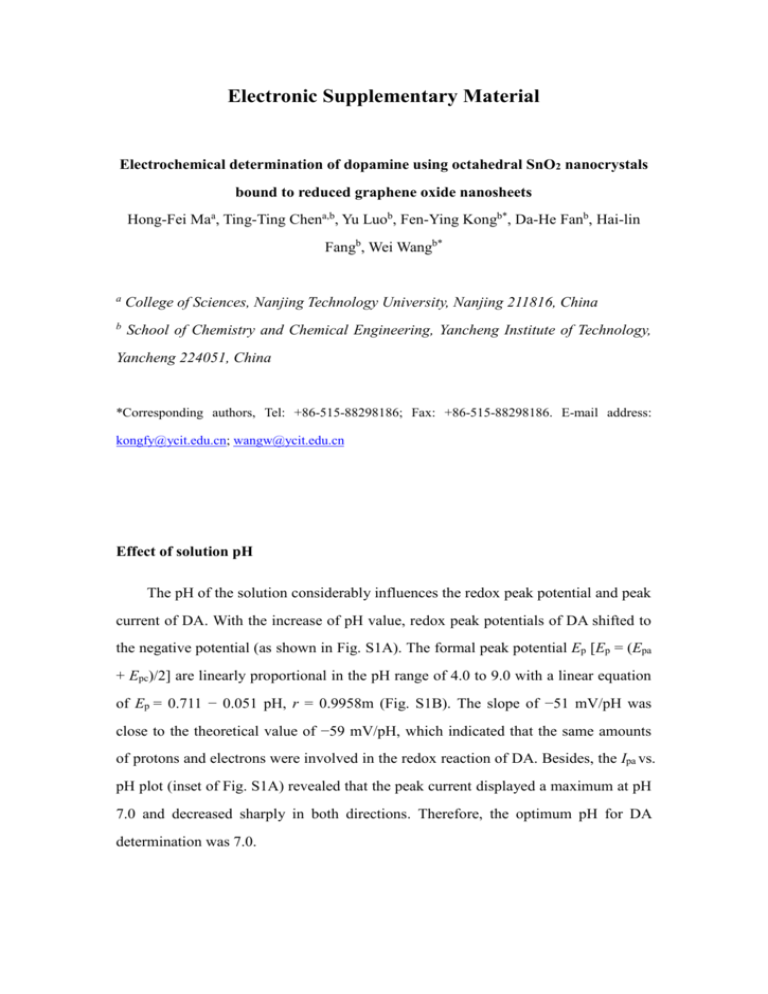
Electronic Supplementary Material Electrochemical determination of dopamine using octahedral SnO2 nanocrystals bound to reduced graphene oxide nanosheets Hong-Fei Maa, Ting-Ting Chena,b, Yu Luob, Fen-Ying Kongb*, Da-He Fanb, Hai-lin Fangb, Wei Wangb* a College of Sciences, Nanjing Technology University, Nanjing 211816, China b School of Chemistry and Chemical Engineering, Yancheng Institute of Technology, Yancheng 224051, China *Corresponding authors, Tel: +86-515-88298186; Fax: +86-515-88298186. E-mail address: kongfy@ycit.edu.cn; wangw@ycit.edu.cn Effect of solution pH The pH of the solution considerably influences the redox peak potential and peak current of DA. With the increase of pH value, redox peak potentials of DA shifted to the negative potential (as shown in Fig. S1A). The formal peak potential Ep [Ep = (Epa + Epc)/2] are linearly proportional in the pH range of 4.0 to 9.0 with a linear equation of Ep = 0.711 − 0.051 pH, r = 0.9958m (Fig. S1B). The slope of −51 mV/pH was close to the theoretical value of −59 mV/pH, which indicated that the same amounts of protons and electrons were involved in the redox reaction of DA. Besides, the Ipa vs. pH plot (inset of Fig. S1A) revealed that the peak current displayed a maximum at pH 7.0 and decreased sharply in both directions. Therefore, the optimum pH for DA determination was 7.0. Effect of fraction of SnO2 in the nanocomposites The amount of SnO2 plays an important role in the determination of DA. As shown in Fig. S1C, the oxidation peak currents of DA increased with increasing SnO2 content in the nanocomposites. It reached a maximum value at the mass ratio of 1:1 (r-GO/SnO2) and decreased at 1:5, which is probably attributed to the smaller conductivity of SnO2. So, the fraction was fixed at 1 for further investigation in this work. Effect of scan rate The influence of scan rate on the cyclic voltammetric response of 50 μM DA on r-GO-SnO2/GCE was recorded with the results shown in Fig. S1D. With the increase of scan rate, the redox peak currents increased gradually. A good liner relationship between the redox peak currents (Ip) and the scan rates (v) was plotted in the range from 10 to 200 mV s-1 with the results shown as the inset of Fig. S1D. Two linear equations were calculated as Ipc (μA) = −1.201 − 0.035v (mV s-1), r = 0.9903 and Ipa (μA) = 2.821 + 0.042v (mV s-1), r = 0.9952. This suggests that the reaction is adsorption-controlled electrode reaction. At higher scan rate, the redox peak potential (Ep) and ln v also exhibited a good liner relationship with the liner equations calculated as Epa (V) = 0.076 + 0.066 ln v, r = 0.9945 and Epc (V) = 0.379 − 0.04 ln v, r = 0.9946. According to the related equations [1,2], the electron number (n) was calculated as 2, which is consistent with that reported in literature [3,4]. Fig. S1 CVs of 50 μM DA at the r-GO-SnO2/GCE (A) in the different pHs of 0.1 M phosphate buffer media (a→f: 4.0, 5.0, 6.0, 7.0, 8.0, 9.0). Scan rate, 100 mV s-1. Inset: Plot of Ipa vs. pH; (B) Plot of pH versus the formal potential of the DA redox peak; (C) with different fraction (r-GO/SnO2): (a) 10:1, (b) 2:1, (c)1:1, (d) 1:5 in 0.1 M phosphate buffer (pH 7.0), Scan rate, 100 mV s-1; (D) with different scan rate (a→g: 10, 30, 50, 80,100, 150, 200 mv s-1) in 0.1 M phosphate buffer (pH 7.0). Inset: plots of anodic and cathodic peak currents versus scan rates. Table S1 Results for determination of DA with some potentially interfering ions. a a Coexisting Substance Concentration I S/I O (%) L-Cysteine 50 mg/L 96.6 L-Glutamine 50 mg/L 96.7 Glucose 5 μM/L 93.5 NaCl 5 μM/L 98.8 KCl 5 μM/L 96.1 Citric acid 5 μM/L 101 Number of samples assayed: 3. References [1] Nicholson RS (1964) Theory of stationary electrode polarography. Single scan and cyclic methods applied to reversible, irreversible, and kinetic systems. Anal Chem 36(4):706-723 [2] Reddy S, Swamy BEK, Jayadevappab H (2012) CuO nanoparticle sensor for the electrochemical determination of dopamine. Electrochim Acta 61:78-86 [3] Yang AK, Xue Y, Zhang Y, Zhang XF, Zhao H, Li XG, He YJ, Yuan ZB (2013) A simple one-pot synthesis of graphene nanosheet/SnO2 nanoparticle hybrid nanocomposites and their application for selective and sensitive electrochemical detection of dopamine. J Mater Chem B 1(13):1804-1811 [4] Sun W, Wang XZ, Wang YH, Ju XM, Xu L, Li GG, Sun ZF (2013) Application of graphene-SnO2 nanocomposite modified electrode for the sensitive electrochemical detection of dopamine. Electrochim Acta 87:317-322
